

FIG Task Force on Geospatial Information Ecosystem
|
| News | Terms of reference | Outcomes | Members |
This Task Force centred upon the involvement of FIG members in geospatial fields to re-position their international standing and assert the essential relevance of geospatial experts in international markets. The main objectives of the Task Force are to: assess and improve the impact of FIG for its members and partners (existing and new partners); assess and improve the role of FIG in international trends and future geospatial information ecosystem, as well as the role of members in global geospatial market; and provide recommendations for FIG Council to adopt and implement the outcomes of the setout objectives. Its expected outcome is to reinforce and grow FIG’s influence as a key and influential organization within the global geospatial data ecosystem, and the outputs could include a FIG booklet, series of reports/recommendations/contributions to the development of FIG profession.
 Follow on LinkedIn
Follow on LinkedInProgress reports from Task Force Geospatial Information Ecosystem at FIG General Assemblies:
2025: Report · Presentation
2024: Report · Presentation 1 · Presentation 2
June 2025
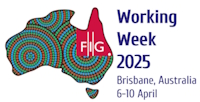
Among the many activities in the programme of the FIG Working Week 2025 in Brisbane, Australia, there were also several task force sessions.
The task force was established at the FIG Working Week 2023 in Orlando, Florida, and its Terms of Reference was approved by FIG General Assembly on 28 May 2023 as well as the appointed chair Abbas Rajabifard.
During the Working Week the FIG Director Generals Forum was contested
by the new FIG-Task Force on “The Role of FIG in International Trends and
Future Geospatial Information Ecosystem”. Members of the Task Force
provided background information, which was followed by a moderated panel
discussion, aimed to seek opinions and input from the attending Director
Generals.
Opening and Welcome by Daniel Steudler and Abbas Rajabifard
[handouts]
UN-GGIM Perspective on Geospatial Information Trends by Greg Scott
[handouts]
Task Force on “The Role of FIG in International Trends and the Future
Geospatial Information Ecosystem” by Hartmut Müller
[handouts]
Scenario Study on Future Land Administration by Fredrik Zetterquist
Strategy Drivers of Land Administration Authorities in Europe by Kirsikka
Riekkinen
[handouts]
Moderated Panel Discussion
As the leading and premier international organization representing the interests of surveying, land and geospatial practitioners worldwide, it is essential that FIG continually reviews its role and function to remain relevant, and maintain its international impact while providing services not only to its members but also its global partners. FIG needs to consider its role in relation to its international standing and leadership in the geospatial arena, now and for the future.
In recent years we have seen significant changes in the markets and within the profession. The geospatial industry and land professions are dealing with major global challenges such as rapid urbanisation and the effects of climate change. FIG wishes to examine its role, as well as the functions and competencies of surveyors, to make sure they remain aligned with international trends and domain specific drivers which shape our industry. This will empower FIG to be fit for the future both within the geospatial market and in the wider and emerging digital transformation markets.
FIG will focus on maintaining and enhancing its professional relevance for a wider societal benefit, recognising the pivotal role that geospatial data plays as an enabler particularly in land administration. This is in the context of the UN Sustainability Agenda as well as international trends and emerging geospatial information ecosystem.
FIG needs to identify the current and potential reach and the impact it can contribute to wider geospatial areas such as Big Data and AI. This is a broad agenda and FIG needs to assess how it can work with other organisations, such as UN-GGIM, to improve its impact . The drive is that FIG aims to play a thought leadership role to create a better market for FIG members in emerging geospatial fields.
With this, the Task Force centred upon the involvement of our profession in geospatial fields to re-position its international standing and assert the essential relevance of geospatial experts in international markets. Geospatial data is a component of systems in all sectors. As such, it is expected that other professions will see geospatial as important, but the Task Force aims to secure the role of the geospatial expert in these domains.
The Task Force will be cognisant of what is happening in the FIG commissions, in order to strengthen their roles and capabilities and also avoid duplication. The Task Force will be clear in its purpose and will report to Council and the General Assembly (GA).
The main objectives of this Task Force are:
The Task Force will present periodic reports to Council and other relevant channels on their findings concerning current FIG role in Global Geospatial market trends. The Task Force will undertake its work via a unified, collaborative, transparent and consultative approach together with the FIG members. In this context, the general discussions points can be:
In the context of its objectives, the Task Force aims to deliver two achievements:
The outcome for this Task Force is to reinforce and grow FIG’s influence as a key and influential organisation within the global geospatial data ecosystem. This will be delivered through analysis of international trends, identification of areas where FIG can and does have the most impact, and the development of roadmaps to align with FIG members and partners.
Outputs could include…a FIG booklet, series of reports/recommendations/contributions to the development of FIG profession (etc). The details of these outcomes will be listed in the advanced work plan.
A work plan will be created by the Task Force to list the activities and milestones in response to its objectives and deliverables. The Task Force will focus on:
Whilst the Task Force will have the responsibility for implementing TOR, the team will undertake this via a unified, collaborative, and consultative approach with all FIG members. In other words, the Task Force will identify, consult, and discuss with our internal and external stakeholders what we are doing well, what we can do better, challenges or trends affecting influencing the future, and how to resolve such matters.
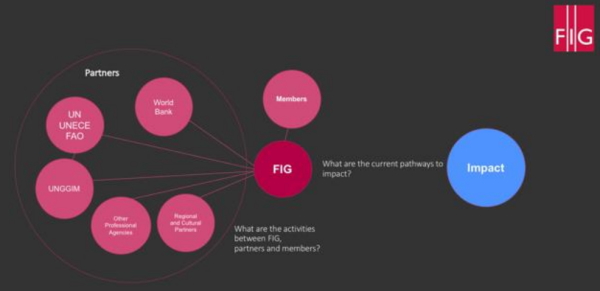
With respect to the work plan, it is expected and highly recommended that the Task Force:
Here is a snapshot of the deliverables and schedule:
| Activities | Aims | Expected Delivery |
| TOR Council Approval | TOR Approval | February 2023 |
| TF and TOR General Assembly Approval | FIG Working Week Orlando | May 2023 |
| TF detailed Work Plan development with expected milestones and deliveries | Detailed Work Plan | July 2023 |
| Assess 1: SWOT analysis of the FIG current strategy and operation, its activities with major partners and members | Evidence base for impact of FIG | Aug-Dec 2023 |
| Mapping of interrelations between FIG commissions, networks, partners, and international entities | Oct-Dec 2023 | |
| Assess 2: Review of International geospatial trends and future ecosystem | To better understand potential future directions of development and to ascertain the readiness of FIG in this context | 2023-2024 |
| Identification of challenges and opportunities for FIG and main international players and authorities to interact | 2024 | |
| Conduct a series of open seminars/panel discussions/workshops (virtual/f2f) to identify and capture relevant inputs for the operation and the communications of the TF | At least one activity per year, and in 2025 the activity would be to launch the outcomes of the TF | 2023-2025 |
| Regular Reports on the TF findings, and recommendations to Council | 2023-2025 | |
| Final Publication- a Strategy Roadmap | For release at the FIG 2025 Working Week in Brisbane | June 2025 |
The TF Co-Chairs will be from two different FIG regions. Co-Chairs will be responsible for creating the Work Plan for each year of the TF, as well as a Four-year overall work plan for the TF. Co-Chairs will be responsible for undertaking annual reviews of the TF’s performance and annual reporting to FIG Council. The TF Core Team will consist of a minimum of 8 members. Across these there is a representative from each FIG region, and a fair mixture of Young Surveyors and seasoned surveyors. Core team membership currently stands as:
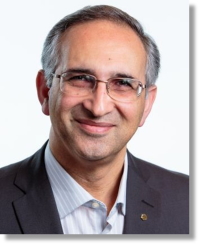 |
Prof Abbas Rajabifard is an internationally recognized
scholar and a proud surveyor and a geospatial engineer with over
30 years of experience. He is an active leader in research and
development in land administration system modernization,
sustainability and resilience. |
 |
Dr. Kirsikka Riekkinen is an assistant professor in land management at Aalto University, Finland. Kirsikka holds a PhD degree in real estate economics since 2014. Her research is focused on land administration and cadastral systems, as well as land consolidation. Kirsikka is currently vice chair of FIG Commission 7 |
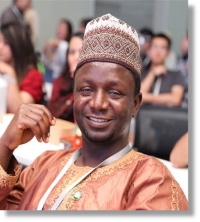 |
Surv. Adamu Bala has been a Lecturer in the Department of Geomatics, Ahmadu Bello University, Zaria, Nigeria, since 2018; and presently, a PhD candidate with a major in Surveying and Mapping Sciences and Technology at the China University of Geosciences, Wuhan, China. Before then, he had worked with an engineering consultancy firm and a federal government research institute as a Surveyor and a Geoscientist, respectively. Surv. Bala is a mentor at the FIG Africa Regional Network, a member of many professional bodies; a Registered/Licensed Surveyor and also an Examiner with the Surveyors Council of Nigeria. He is equally the Chief Editor of the Geoinformatics Forum Magazine. |
He has received numerous recognitions and awards such as the: “2022 FIG-Survey Review Biennial prize”; “2022 Distinguished Young Surveyor Award”; “2022 Young Surveyors’ Academic Scholar with Excellence Award”; “The President of the Nigerian Institution of Surveyors 2023 Merit award”; “Outstanding Participant certificate at the 2023 International Geomatics Summer School at the LIESMARS”; “the xyHt geospatial magazine`s one of the 23 Young Geospatial Professionals to watch in 2023”; “the Geospatial World`s one of the 50 Geospatial Rising Stars for 2023”; “the 2023 ASPRS Student Conference Presentation grant”; "1st prize in the semi-final, and Best Creative project award in the final of the China-Africa Youth Innovation competitions, in Shanghai and Wuhan, respectively" and an also appointed as an International Admission Ambassador of the China University of Geosciences, Wuhan, China, 2023. He has attended and fully participated in numerous international conferences, competitions, and also authored and published peer-reviewed research papers in several local and international journals.
 |
Dr Daniel Steudler holds a PhD degree from the University of Melbourne, Australia and is a scientific associate with the Swiss Federal Office of Topography swisstopo, working for the Federal Directorate for Cadastral Surveying. He has been active in FIG-Commission 7 for many years and was chair of the FIG-Task Force on «Spatially Enabled Society». He published widely in the cadastral field and consulted internationally in land administration and cadastral issues. Since March 2015, he is chair of the EuroGeographics "Cadastre and Land Registry" Knowledge Exchange Network. He is Vice-President of FIG in the period 2023-2026. |
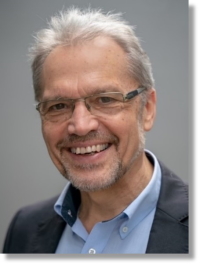 |
Prof Hartmut Müller is professor emeritus+ at University of Applied Sciences Mainz, Germany. He received his diploma and doctoral degree in Geodesy from Karlsruhe University, Germany. Until 2019 he was founding director of Mainz University’s Institute for Spatial Information and Surveying Technology. He serves on editorial boards of journals and book series. His research interests are in the areas of geospatial information management, spatial data infrastructures, and quality of geospatial data. From 2015 to 2018 he was working group chair of FIG International Federation of Surveyors, from 2019 to 2022 commission chair, and from 2021 to 2022 representative of the Advisory Committee of Commission Officers to the FIG Council. |
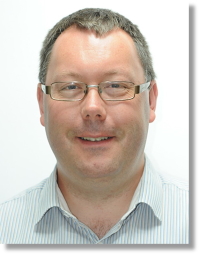 |
James Norris is the International Policy Lead at Ordnance Survey where he works to promote the vital role that geography and geospatial data has in transforming economies, sustaining the environment, and making the world a better place. He is a Fellow of the Royal Geographic Society, and works across several domains in the geospatial information sector. Most recently promoting the work of UN-GGIM. James has written several international policy documents including the UN-GGIM’s ‘Future Trends in Geospatial Information Management: 5-10-year vision Second Ed.’ and was a contributing author to the UNDRR ‘Global Assessment Report on Disaster Risk Reduction 2019’ where he wrote about 'Changes in technology and data sharing'. He recently wrote a UN-GGIM Discussion Paper on ‘Geospatial Information for Climate Resilience – What does UN-GGIM do?’. James is committed to outreach and advocacy in the geospatial domain and is part of several outreach initiatives including the Association for Geographic Information’s Early Careers Network which promotes opportunities for professionals with less than 10 years industry experience. |
 |
Dr. Ryan Keenan is Chair of FIG Commission 5 Positioning and Measurement, and an active member of the FIG Asia Pacific Capability Development Network (AP CDN). Ryan is the FIG Representative to the United Nations’ Sub-Committee on Geodesy (SCoG), an industry member of two UN-GGIM Working Groups, an industry member of the UN-GGIM Private Sector Network (PSN) and an individual member on the UN Global Geodetic Centre of Excellence (GGCE) International Advisory Committee (IAC). As Principal Consultant at Positioning Insights in Melbourne Australia, Dr. Keenan provides bespoke advisory services to global public and private sector organisations, on how satellite- and terrestrial-based positioning technologies can be best applied to overcome increasing challenges across multiple markets. |
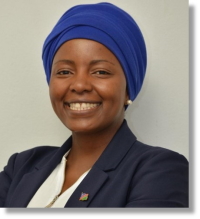 |
Menare Royal Mabakeng is currently a lecturer specializing in Land Administration within the Department of Land and Spatial Sciences at Namibia University of Science and Technology. Simultaneously, she is pursuing her PhD in Integrated Water Resources Management. Her research is centred on the utilization of open land data to promote tenure security, address water tenure issues, and facilitate participatory informal settlement upgrading. Specifically, her work explores the impact of community-generated land-related information on vulnerable populations, with a particular focus on women and young individuals residing in informal settlements. Within NUST, she contributes her expertise to various courses, including those focused on Innovative Approaches to Land Administration, Land Policy and Development, Project Management for Land Administration and Information Systems Law. Royal holds a Master of Science degree in Earth Observation for Land Administration from the University of Twente, Faculty ITC in the Netherlands. |
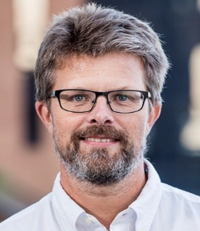 |
Mikael Lilje is the Head of the International Department at Lantmäteriet (the Swedish mapping, cadastral and land registration authority). The department is responsible for the international services that Lantmäteriet is involved in, mainly in Africa and the Balkans. The Department is also supporting the Director General and her management board in co-operations like UN, UNGGIM, EuroGeographics and other important international organisations. Mikael has been active in FIG since 1998 and is currently Council member. Previously, he has been chair of the Task Force on Commission Structure, Chair of FIG Commission 5 (2011-2014), working group chair (2002-2016, 2006-2010) and Commission secretary 1998-2002. He was acting as FIG liaison to UNOOSA between 2011-18 and has organized numerous technical sessions and seminars. Mikael was co-chair of the working group on Strengthen Capacity Development within the UN-GGIM High Level Group on IGIF as well as leading the UN-GGIM Subcommittee on Geodesy working group on Education, Training and Capacity Building. He has been representing Sweden in the UNGGIM Subcommittee on Geodesy Bureau. |
 |
Rosario Casanova is a professional land surveyor from Facultad de Ingeniería, Universidad de la República, Uruguay. Prof. Casanova has a master’s degree in Planning and Land Development from and a Doctorate degree in Land Surveying. She has been professor at the Land Surveying Institute in Uruguay for almost 30 years, being the Senior Lecturer of the Geomatic Department of that Institute. She was the Director of the Land Surveying Institute from 2014 until 2020. Prof. Casanova has been professor and researcher of Lincoln Institute of Land Policy, Programa para América Latina y el Caribe, since 2005. Dra. Casanova is member of different academic networks related with the geographical information, especially she is the chair of the Academic Network of UN-GGIM: Americas, she is the vice-chair of Commission 2: Professional education of International Federation of Surveyors (FIG) and recently she was appointed as the vice-chair of the FIG Regional Network, America. In the national level she is serving as Vice-President for the National Society of Professional Surveyors in Uruguay (Asociación de Agrimensores del Uruguay). |
 |
Fredrik Zetterquist is a geospatial and land administration expert with 20+ years of experience from international engagements. Between 2017 and 2023 Fredrik was chair of the UNECE Working Party on Land Administration. Since 2019 his permanent position is as Programme Faculty Director for a 5-year study programme in geospatial information science at the University of Gävle, Sweden. |